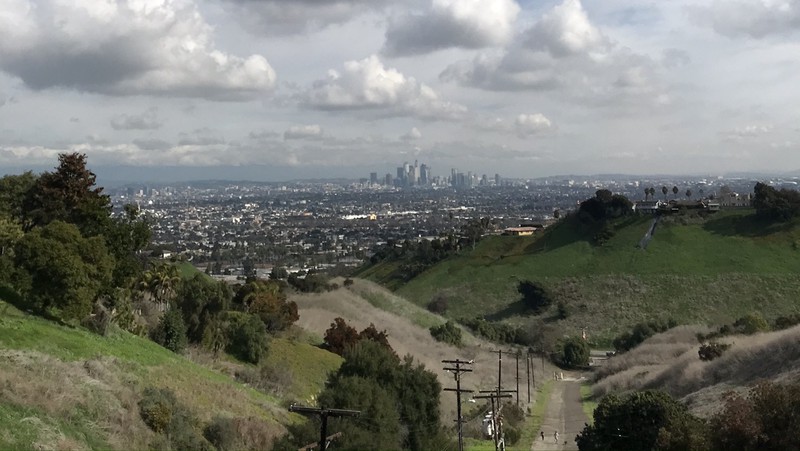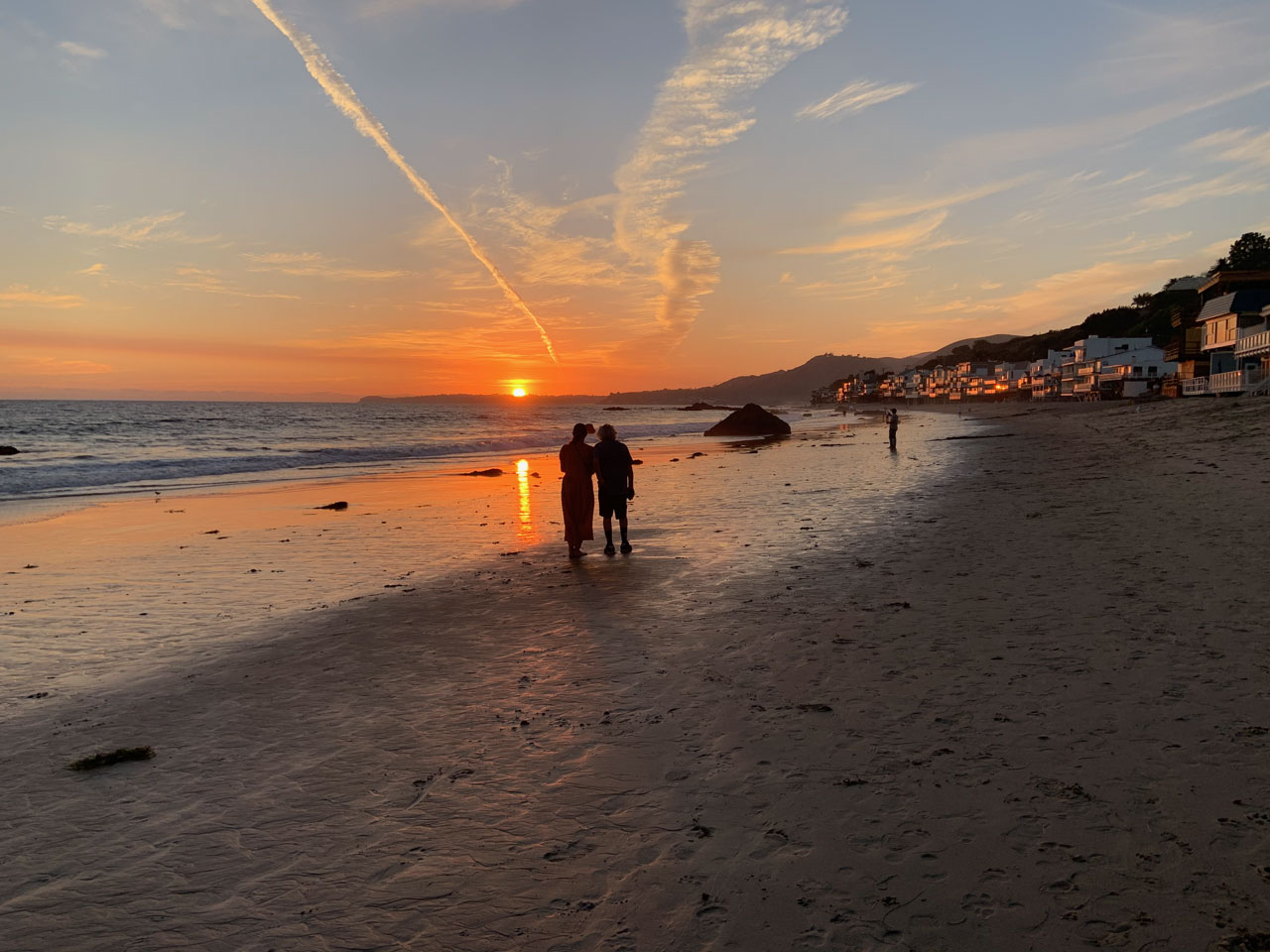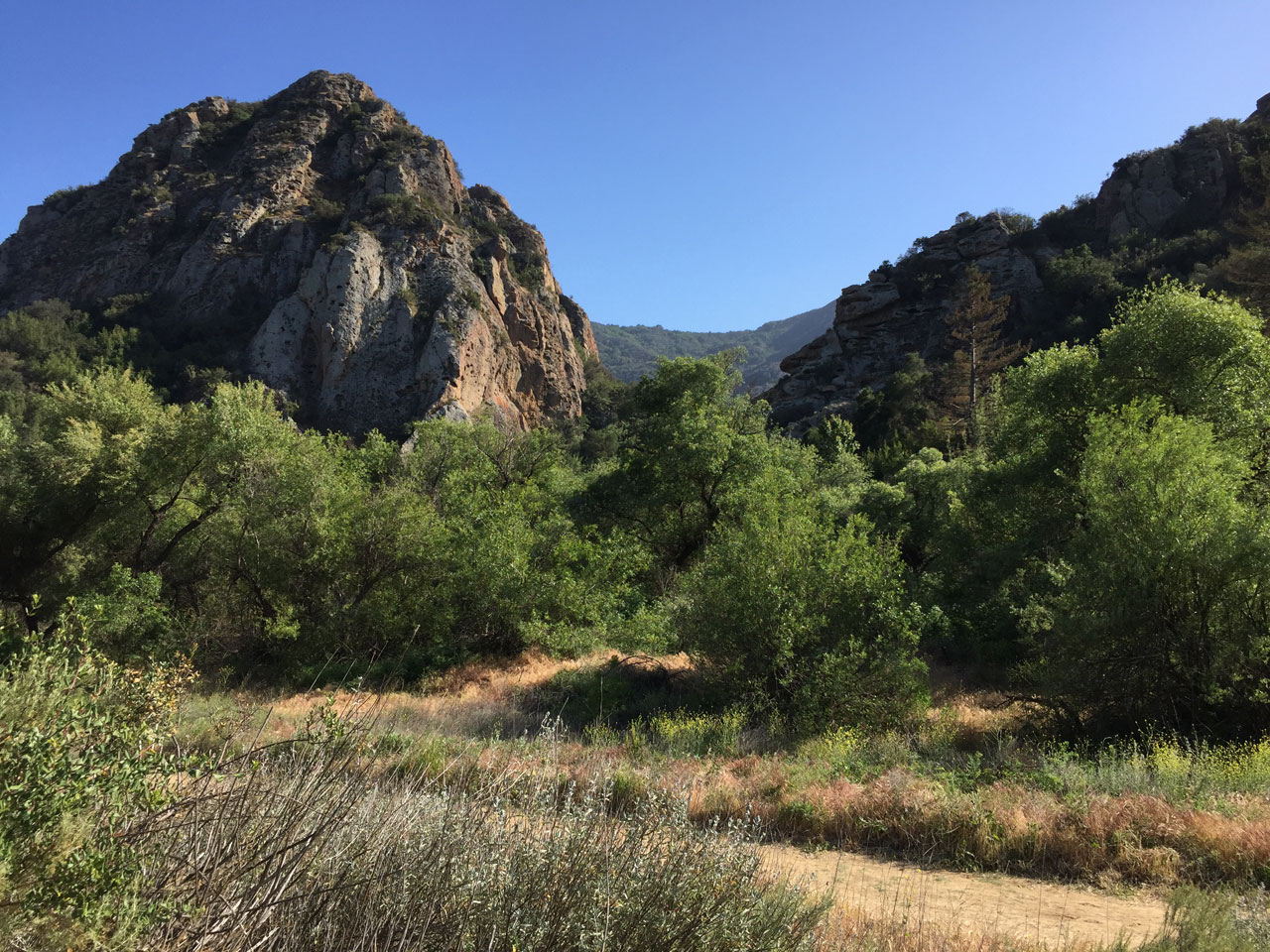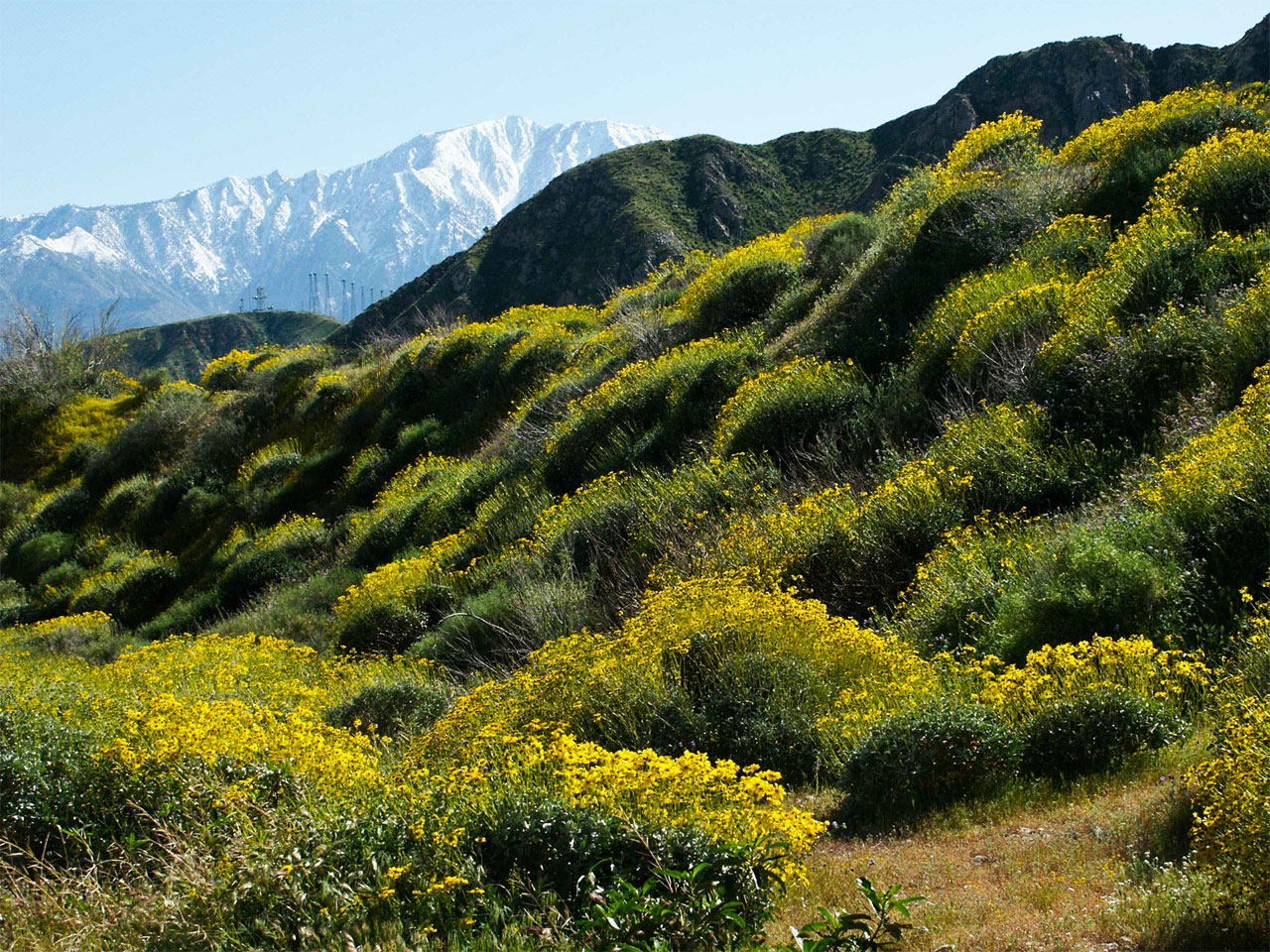Starting in 1976, the legislature began creating agencies to buy up open land, and keep it open.

The Baldwin Hills area in South Los Angeles is one region where a state conservancy would keep open land accessible to the public. Jengod / Wikimedia Commons C.C. Share-ALike 4.0 License
When it comes to acres of land, California’s got them. Only Alaska and Texas occupy more acres than California, whose state boundaries encompass more than 104 million of them. Approximately 75 percent of those acres are wildlands—undeveloped, open space. The federal government owns about 60 percent of that open land, with private entities owning 37 percent. The state of California owns almost all of the rest, just over 2 percent, and local governments own what’s left after that.
But there are also 24 million acres used for agriculture, meaning only a small percentage of California land actually serves as home to its population of 39 million plus. These vast stretches of open land earned California a Number One ranking in the “Open Spaces and Beauty” category of a recent study by the public health website MPH Online, rating all 50 states for their “green” qualities.
Nature Conservation: a California Tradition
California earned the ranking. The state has made a priority of protecting its natural wildlands and the wildlife that live on them as long as California has been a state. In 1851, the year after California gained admittance to the United States, the young legislature passed the country’s first law protecting wildlife—in this case, specifically, oysters.
The following year, the protections were extended to various types of game, that is, animals that may be legally hunted, including elk, deer, ducks and others—for six months of the year and in 12 counties only. In 1854 the game protections went statewide. And in 1870, California established the Board of Fish Commissioners, known since 1909 as the California Fish and Game Commission, which was the first government agency for wildlife conservation in the United States—one year ahead of the federal government’s creation of its own Commission of Fish and Fisheries.

Today, conservation of wildlife, open spaces, forests, water and most of the other natural resources California has to offer falls under the jurisdiction of the state’s Natural Resources Agency, which splits its duties among numerous departments and sub-agencies (the Fish and Game Commission being just one). Among the others are the Department of Conservation, the California Conservation Corps, the Water Commission, the Coastal Commission, the Native American Heritage Commission and the Office of Energy Infrastructure Safety.
One type of department occurs no fewer than 10 times on the Natural Resources Agency roster. That would be the “conservancy.” With so many other government resources and departments devoted to various aspects of environmental conservation, why does the Natural Resources Agency need 10 different conservancies, and what do those agencies do?
It All Started on the Coast
Along with the powerful California Coastal Commission, the year 1976 saw the creation of the California Coastal Conservancy—the first of its now 10 state-run conservancies. While the Coastal Commission has broad power to regulate and even stop development on the state’s 840-mile coastline, the Coastal Conservancy, like the nine conservancies formed around the state in its wake, has no regulatory authority.
The Coastal Conservancy differs from the other state conservancies in one simple respect: it’s a lot bigger. Most state conservancies confine their work to a specific region, albeit sometimes a large one. The Coachella Valley Mountains Conservancy, for example, has conserved 106,000 acres of land since its founding in 1991.
The Coastal Conservancy has protected more than 400,000 acres in 28 counties, including urban parks, rural trails, wetlands, waterfronts and other types of natural areas. Seven board members oversee the Coastal Conservancy—two appointed by the governor, one by the Assembly speaker, and one by the Senate Rules Committee.
The other three members are the Secretary for Natural Resources, the Director of the Department of Finance, and the Chair of the California Coastal Commission.
What Are the Other Nine Conservancies?
Four years after establishing the Coastal Conservancy, the legislature created the Santa Monica Mountains Conservancy in Southern California. Since its founding, it has been responsible for preserving 75,000 acres of parkland, according to its official website. That one was followed in 1985 by the California Tahoe Conservancy that covers the California portion of the Tahoe River Basin, about 236 square miles.

The Tahoe Conservancy actually owns about 6,500 acres, covering 4,700 parcels of land, all devoted to preservation of the natural environment as well as guaranteeing that the California public maintains access to Lake Tahoe.
The Coachella Valley Mountains Conservancy was inaugurated in 1991, followed in 1995 by the San Joaquin River Conservancy whose stated mission was to manage a 22-mile stretch of floodplain Friant Dam to Highway 99, known as the San Joaquin River Parkway, as spelled out in the San Joaquin River Conservancy Act, passed by the legislature three years before the conservancy opened for business.
Eastern Los Angeles County and parts of western Orange County got their own conservancy, the San Gabriel and Lower Los Angeles Rivers and Mountains Conservancy, or RMC for short, in 1999. The RMC has a notably complex job, with all or part of 79 cities contained within its territory, including Los Angeles, Anaheim and Long Beach. The RMC forms partnerships and other types of collaborations with government agencies in those cities, as well as with federal and state agencies, private businesses and nonprofit groups.
The RMC is also a member of three Joint Powers Authorities, the multi-governmental entities permitted under state law to address specific issues, and which possess quasi-governmental powers.
Oil vs. Parks in Baldwin Hills
The Baldwin Hills and Urban Watershed Conservancy came next, in 2001. Located in the densely populated Baldwin Hills area of South Los Angeles, it includes surrounding areas such as Culver City and El Segundo. Among its other projects, the Baldwin Hills Conservancy has committed a vision it calls “One Big Park,” a plan to unify the numerous urban parks centered around the Kenneth Hahn Recreation Area—which sits on the site of the former Baldwin Hills Dam. The dam burst in 1963 in a disaster that claimed five lives and caused $12 million (about $121 million in 2024 terms) in damage, and the area was then set aside as parkland.

But Baldwin Hills has one of the most daunting tasks of any of California’s 10 conservancies, with an ongoing oil drilling operation in the neighborhood. Oil companies have rights there dating back to 1920, making the conservancy’s job what one conservation official called “the most difficult urban park challenge in America.”
Three more conservancies joined the Natural Resource Agency’s roster in the 21st century. The San Diego River Conservancy went into operation in 2003, followed by the Sierra Nevada Conservancy the very next year. Finally, in 2010, the Sacramento-San Joaquin Delta Conservancy came into being with the job of restoring and maintaining the ecosystem in the Delta region.
What Conservancies Do, and How They Pay for It
On seemingly every ballot, California voters are asked to approve a bond measure for some project or other—schools, prisons, roads and so on. On the March 2000, ballot, they voted on and approved Propositions 12 and 13. Prop 12 issued $2.1 billion in bonds for parks, and 13 was a $2 billion bond for water projects.
Prop 12 was the first park bond measure passed since 1988, following a flurry from the mid 1970s to early ‘80s. But by the turn of the 21st century, all of the funds from those earlier sales had been spent. Water bonds were more frequent, but the last one had passed in 1997.
Conservancies draw a large portion of their funding from Prop 12 and 13 bonds. In 2002, voters passed Prop 40, the California Clean Water, Clean Air, Safe Neighborhood Parks, and Coastal Protection Act, which raised another $2.6 billion from bond issues, with the money going to parks and other recreational areas.
The Baldwin Hills Conservancy received $40 million from Prop 40, while the Coastal Conservancy received $240 million from that bond issue and another $250 million from Prop 12 and $21.5 million from Prop 13. The Coachella Conservancy got $20 million from Prop 40, but only $5 million from Prop 12. And so on. Conservancies also get money from private funding sources, and other state and local agencies.

What do they do with that money? The main function of the conservancies is to buy up land to conserve it. Unlike other agencies—the Wildlife Conservation Agency, for example—state conservancies do not primarily concern themselves with acquiring land for wildlife protection, though they will sponsor projects that restore land that has been polluted or otherwise degraded, so that it can support wildlife again.
Their main function, however, is to protect land for public recreational use, making sure Californians have access to the state’s undeveloped, natural environment. And while it’s up to other agencies to regulate development, resisting the pressures to build on previously open land, conservancies put the brakes on runaway development by owning land and simply keeping it in the same condition they found it.
A 2001 analysis by the state Legislative Analyst’s Office recommended that the best use if the conservancy system was to focus on resources that are of “extraordinary significance” to the state.
“The state’s coastline and Lake Tahoe are two noteworthy examples. The protection and management of these resources is in the interests of all Californians—not merely to those who live near them,” the LAO wrote. “Stewardship of these resources thus should be the responsibility of the state government. It is in such circumstances that state conservancies can play a role.”
Long form articles which explain how something works, or provide context or background information about a current issue or topic.